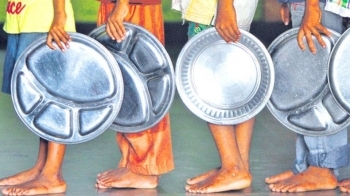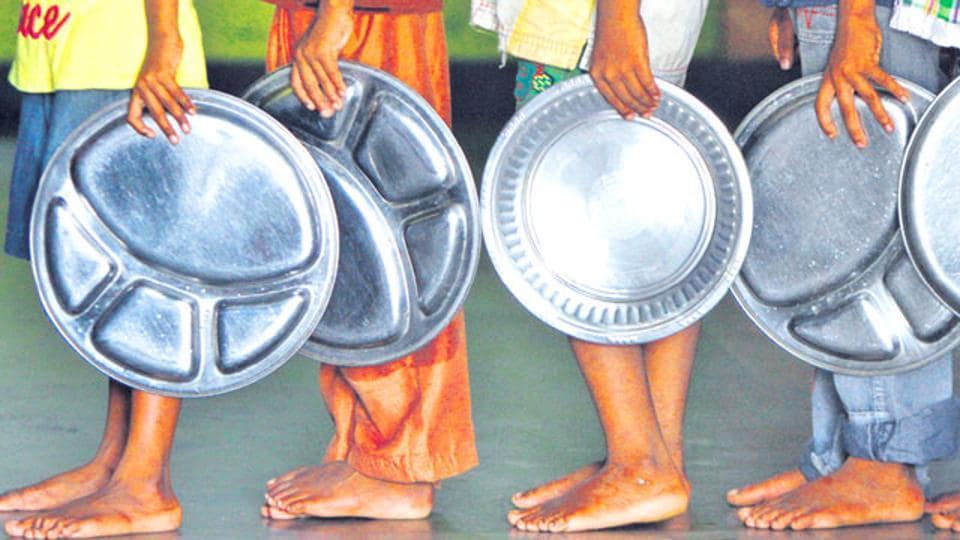
.jpg) Vincent Perappaden
Vincent Perappaden

The Central Government recently submitted before the Supreme Court that there were no starvation deaths in the country as no State had provided data in this regard. However, it has come to light that there had been several starvation deaths, and the victims were mostly Dalits, Adivasis or minorities.
Data collected from various newspapers from 2015 to 2020 and verified individually by a fact-finding team presents a deplorable scenario of starvation deaths across states in India.
According to a data, the number of such deaths stands at 108 and it has come from various states. Unfortunately, neither the State Governments nor the Central Government owns the starvation deaths but brushes aside them as deaths due to some sort of ailments.
On November 26, the Supreme Court gave the Union Government a two-week deadline to take measures to stop starvation deaths. The Bench which heard the case comprised Chief Justice of India N. V. Ramana and Justices Surya Kant and Hima Kohli.
The Attorney General of India, K. K. Venugopal, argued before the Bench on 17th January 2022, denying any starvation death in the country.
According to Bar and Bench, a premier online legal news portal, the Attorney General said, “the Centre had introduced 131 schemes to combat hunger issues, in which lakhs of crores were spent”.
The A-G insisted that the states have to find out the problem and each panchayat has to devise a process to tackle the issue in its area, after which the Centre could provide funds.
Chief Justice Ramana highlighted that States like Odisha, Jharkhand, Maharashtra, Punjab and West Bengal run community kitchens, but were dependent on the Centre for funds.
Towards the end of the hearing, the Chief Justice told the A-G, "We are not on starvation, or people dying of hunger. Our focus is that people should not suffer from hunger. You have to discuss with your officers to come up with a nodal scheme."
The matter will be taken up after two weeks, by which time the States are required to file additional affidavits disclosing data on malnutrition, hunger and other issues.
Hunger remains the No.1 cause of death in the world. AIDS, Cancer, etc. follow. There are 820 million chronically hungry people in the world and one-third of them live in India.
According to the United Nations Food and Agriculture Organisation 2019 Report, about 14.5% of the Indian population falls under the undernourished category and around 194 million people survive under the shackles of undernourishment.
National Family and Health Survey estimates exhibit that 38% of children below five years of age fall under the category of stunted ones, and 36% of children are underweight. According to this report, 51.4% of women between the age of 15 and 49 are anaemic.
The UNICEF reports that 8.8 lakh children under five years of age lost their life due to starvation in 2018. Over 20 crore Indians sleep empty-stomach every day. More than 7000 Indians die per day due to hunger.
As per the reports concluded from the recent data, 25 lakh Indians die every year because of hunger. Yet the Supreme Court was conclusively told that there was no starvation death in India.
It is an irony that India has 577.78 lakh tonnes of food grains in stock (many times more than the buffer stock required), yet hunger is at the peak after economic disruption due to lock down and the pandemic.
However, the Central government did not think of universalisation or distribution of grains to non-ration cardholders during the lockdown.
There is an attempt for privatisation of the Food Corporation of India (FCI) and gradually dismantle it while privatising its food stocks.
According to the Indian Express report on February 28, 2021, NITI AAYOG, the government think tank, recommended reducing the rural and urban coverage under the National Food Security Act, 2013, to 60 per cent and 40 per cent respectively, which it estimates, can result in annual savings of up to Rs 47,229 crore.
The West Bengal Right to Food and Work campaign undertook a hunger watch study among 3000 households among the rural and urban poor in 20 districts in October and November 2020 after reaching out to the hungry with food kits.
The findings were shocking as there was a drastic decline in both food consumption and income patterns from March 2020 to lockdown (April and May) with a further decline by September 2020. While one in four reported that their income was reduced to half during the lockdown, this rose to one in three almost, by the end of September.
More than half of the respondents reported a decrease in cereal and pulses consumption between pre- and post-lockdown periods. And, post-lockdown, as high as 68% and 80% reported a decrease in vegetable consumption and meat, fish, egg consumption respectively.
The percentage of those who had to skip a meal had doubled by the end of September.
In households where family members had increased due to the influx of the migrant populations, the overall quantity of food consumed had not increased, with the same amount of food being shared by a larger number of people.
Only 50% reported having procured food from the ration shops in September, and 11% of the respondents did not possess ration cards.
These findings must be understood in the backdrop of highly vulnerable and precarious population’s lifestyles, as the survey was conducted purposefully with these groups, of which most reported monthly earnings between Rs 3000-5000 and even lesser.
These experiences of hunger and distress were ongoing while the FCI godowns were overflowing.
The anganwadis and schools remain shut. The State government supplied only rice and potatoes for the first few months of the lockdown and the women and children continue being denied their legal entitlements of nutrition.
Beyond a quantitative analysis that the Hunger Watch offered, it also highlighted stories of deprivation and desperation. Hence cases of school drop-outs, child labour, domestic violence, child marriage and untimely deaths, supplemented our database.
The Campaign has received reports of specific starvation-induced deaths during the aftermath of the pandemic among the PVTG Sabar tribe in Lalgarh where starvation deaths took place in 2019 and among the general public in Purulia district.
It is time the country wakes up to the reality of starvation death and reach out with food grains through universalisation of ration through Fare Price Shops with an increase in the quantity and quality of food grains and an addition of Oil and Serials.
(The writer is the convenor of Right to Food Campaign in West Bengal and National Steering Committee member, and a Human Rights Activist)